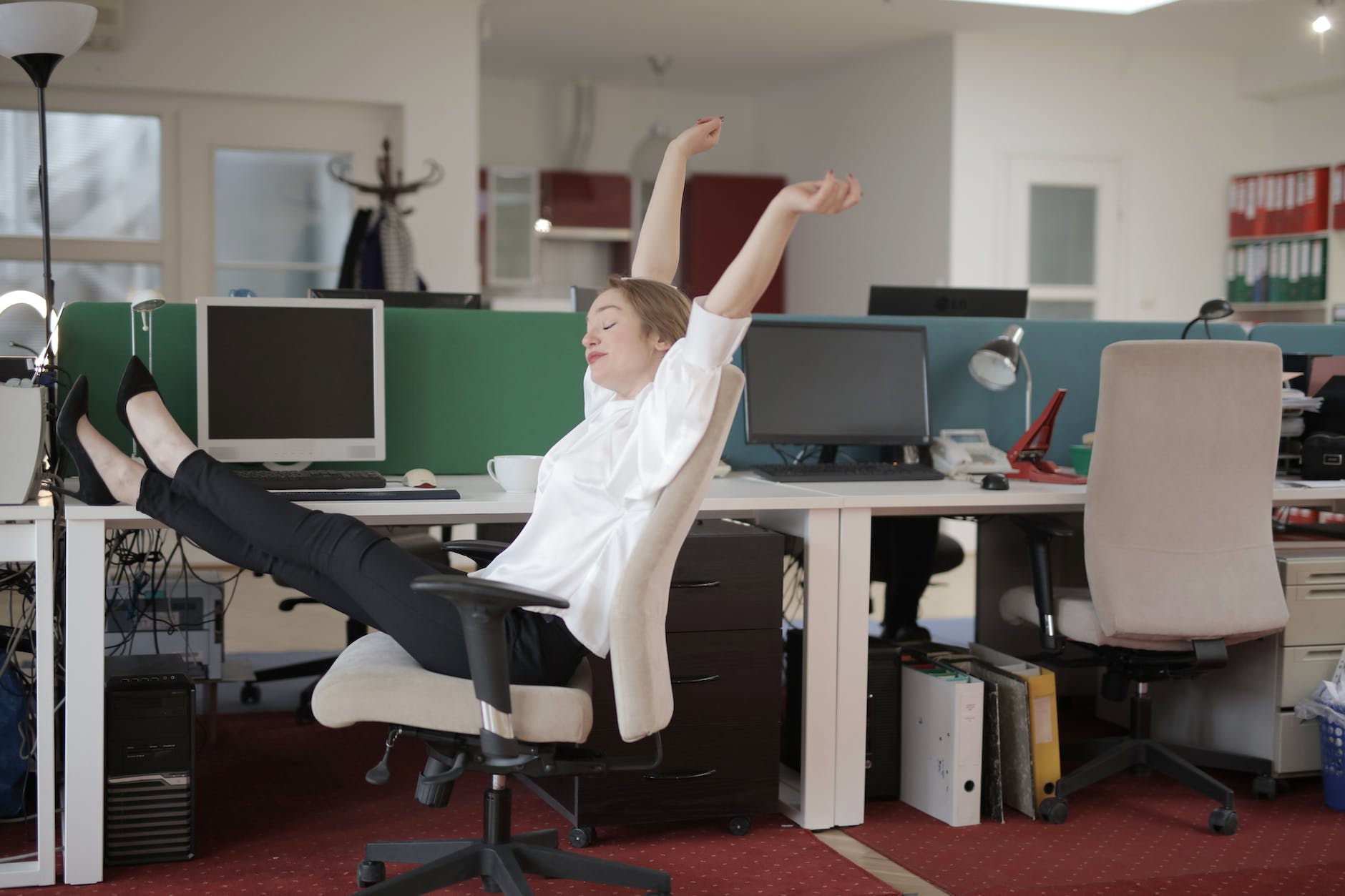
Office Ergonomics: Optimal Desk Setup and Beneficial Stretching Exercises
Introduction
In the modern workplace, where a significant portion of the day is spent at a desk, prioritizing office ergonomics is crucial for the well-being and productivity of employees. This article delves into the essentials of creating an optimal desk setup and incorporating stretching exercises to enhance office ergonomics and minimize the risk of discomfort or injuries.
Understanding the Importance of Office Ergonomics
- Enhanced Comfort and Productivity
- Reduced Discomfort: Proper ergonomics minimizes discomfort, such as back pain or eyestrain, leading to improved focus and productivity.
- Efficient Workflow: A well-designed workspace allows for a more efficient workflow and task completion.
- Prevention of Musculoskeletal Issues
- Posture Support: Ergonomic setups support correct posture, preventing musculoskeletal issues associated with prolonged sitting.
- Injury Reduction: By reducing strain on the body, ergonomic practices contribute to the prevention of workplace injuries.
- Employee Well-Being
- Mental Health Impact: A comfortable and well-organized workspace positively influences mental well-being.
- Increased Job Satisfaction: Employees with ergonomic work environments often report higher job satisfaction.
Optimal Desk Setup for Ergonomics
- Correct Desk and Chair Height
- Elbow and Knee Angles: Set the desk and chair height to maintain comfortable angles at the elbows and knees.
- Feet Flat on the Floor: Ensure that feet can rest flat on the floor or on a footrest.
- Proper Screen Placement
- Eye Level: Position the computer monitor at eye level to reduce neck strain.
- Arm’s Length Away: Maintain a comfortable distance from the screen to avoid eye fatigue.
- Supportive Chair and Posture
- Lumbar Support: Choose a chair with adequate lumbar support to maintain the natural curve of the spine.
- Neutral Posture: Encourage a neutral posture with a straight back and relaxed shoulders.
- Organized Work Surface
- Declutter Workspace: Keep the desk organized to reduce unnecessary reaching and twisting.
- Frequently Used Items: Place frequently used items within easy reach to minimize strain.
- Ergonomic Accessories
- Keyboard and Mouse Placement: Ensure the keyboard and mouse are at a comfortable height to prevent wrist strain.
- Document Holder: Use a document holder to reduce neck strain when referencing papers.
Incorporating Stretching Exercises Into Your Day
- Neck and Shoulder Stretches
- Neck Tilts: Gently tilt your head to each side, holding for 15-30 seconds.
- Shoulder Rolls: Rotate your shoulders forward and backward to relieve tension.
- Back and Spine Stretches
- Seated Cat-Cow Stretch: Arch and round your back while seated, moving between the two positions.
- Spinal Twist: Sit upright, twist your torso gently to one side, and hold for 15-30 seconds on each side.
- Wrist and Forearm Stretches
- Wrist Flexor Stretch: Extend one arm, gently pulling back on your fingers to stretch the wrist and forearm.
- Wrist Extensor Stretch: Extend one arm, pulling back on your hand to stretch the top of the forearm.
- Leg and Hip Stretches
- Seated Leg Extension: Extend one leg at a time, flexing and pointing your foot.
- Seated Hip Stretch: Cross one ankle over the opposite knee, gently pressing down on the crossed leg.
- Full-Body Stretch Routine
- Standing Forward Bend: Bend at the waist, reaching for your toes to stretch the entire back and hamstrings.
- Overhead Reach: Extend your arms overhead, interlocking your fingers and stretching upward.
Benefits of Stretching at the Desk
- Improved Circulation
- Reduced Stiffness: Regular stretching increases blood flow, reducing stiffness and promoting flexibility.
- Enhanced Energy Levels: Improved circulation contributes to increased energy levels throughout the day.
- Stress Reduction
- Relaxation Response: Stretching induces a relaxation response, reducing stress levels.
- Mental Clarity: Short stretching breaks can enhance mental clarity and focus.
- Muscle Maintenance
- Prevention of Tightness: Stretching prevents muscles from becoming overly tight due to prolonged sitting.
- Increased Range of Motion: Regular stretches contribute to maintaining a healthy range of motion in joints.
Conclusion
Prioritizing office ergonomics through an optimal desk setup and incorporating stretching exercises is a proactive approach to creating a healthier and more productive work environment. Employees who are mindful of their workspace design and engage in regular stretching not only experience physical benefits but also contribute to a positive workplace culture. By blending ergonomic principles with simple stretching routines, organizations can foster a workspace where well-being and productivity go hand in hand.
Safety Training Program Evaluation: Measuring Effectiveness and Impact
Psychosocial Risk Assessment in the Workplace: Addressing Mental Health Concerns
Root Cause Analysis (RCA): Identifying and Addressing Underlying Causes of Safety Incidents
Risk Assessment and Hazard Identification: A Key Responsibility for Safety Officers
Personal Protective Equipment (PPE): Selection, Usage, and Maintenance for Safety Officers
Frequently Asked Questions (FAQs)
- Why is office ergonomics important?
- Office ergonomics is important for enhancing comfort, preventing musculoskeletal issues, and promoting overall employee well-being and productivity.
- What are some key elements of an optimal desk setup for ergonomics?
- Elements include correct desk and chair height, proper screen placement, supportive chairs and posture, an organized work surface, and the use of ergonomic accessories such as keyboards and mouse placements.
- How can stretching exercises benefit office workers?
- Stretching exercises at the desk can improve circulation, reduce stress, maintain muscle flexibility, and contribute to overall physical and mental well-being.
- What are some recommended stretching exercises for the office?
- Recommended stretching exercises include neck and shoulder stretches, back and spine stretches, wrist and forearm stretches, leg and hip stretches, and a full-body stretch routine.
- How does incorporating stretching into the workday contribute to a positive workplace culture?
- Incorporating stretching into the workday promotes a positive workplace culture by encouraging employees to prioritize their well-being, fostering a sense of community through shared wellness practices, and contributing to a more relaxed and energized atmosphere.
























